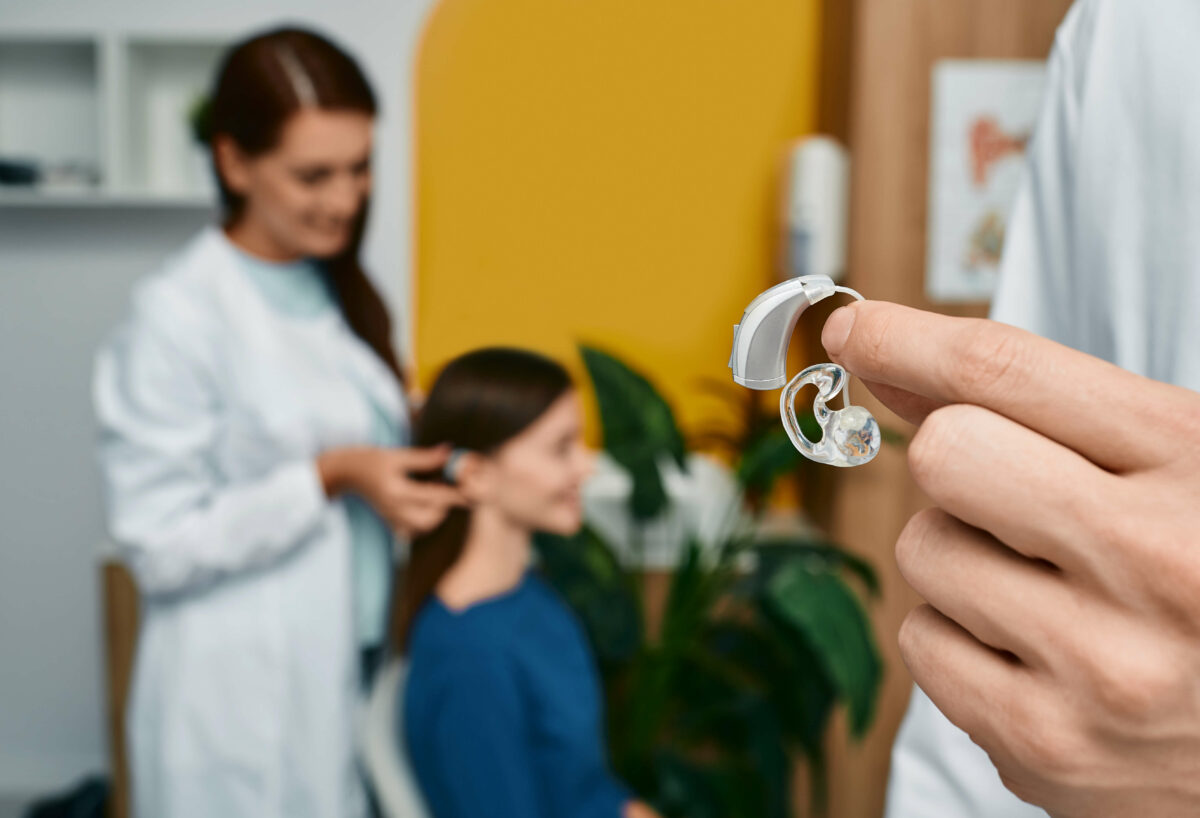- The Difference Between Generic and Custom Earplugs - April 16, 2025
- Choosing Between Renting or Buying Your Hearing Aids - April 6, 2025
- The Importance of Earwax - March 25, 2025
Hearing aids have undergone remarkable transformations in the last decade, bringing revolutionary innovations that enhance listening for individuals with hearing loss. From cutting-edge connectivity features to advanced signal processing, these exciting developments have redefined the way we perceive and engage with the world of sound. Join us as we explore the latest innovations that make modern hearing aids more sophisticated, user-friendly, and transformative than ever before.
1. Bluetooth Connectivity: A Seamless Connection
Wireless Freedom: Modern hearing aids now come equipped with Bluetooth connectivity, allowing users to connect directly to smartphones, tablets, and other Bluetooth-enabled devices. This wireless technology enables hands-free calling, audio streaming, and direct communication with various gadgets.
Enhanced Connectivity Features: Bluetooth connectivity not only facilitates seamless audio streaming but also opens the door to exciting features like geotagging. With this innovation, users can customize and save settings for specific locations, ensuring optimal hearing experiences in various environments. For example, you can customize settings for at home, at your family’s house, or at your favorite coffee shop. When you arrive at that location, your hearing aids will automatically adjust to your pre-saved settings for that location.
2. Artificial Intelligence (AI) and Machine Learning
Adapting to Preferences: AI-driven algorithms in modern hearing aids continuously learn and adapt to users’ preferences and listening environments. This ensures that the hearing aid settings automatically adjust to provide optimal clarity and comfort based on your preferences and changing surroundings.
3. Rechargeable Battery Technology
Environmentally Friendly Power: Traditional disposable batteries are being replaced by rechargeable options in many modern hearing aids. This not only reduces environmental impact but also provides users with the convenience of a long-lasting, eco-friendly power source. You won’t have to change your hearing aid batteries ever again. Instead, just place your hearing aids on their charger overnight, and enjoy a full day of power the next day.
Quick-Charge Capabilities: Rapid advancements in rechargeable battery technology allow for quick charging, ensuring that users spend less time worrying about battery life and more time enjoying uninterrupted hearing experiences. Some quick chargers let you recharge your devices for a few minutes to gain several extra hours of power.
4. Telehealth Integration
Remote Adjustments: Telehealth integration in modern hearing aids enables remote adjustments and fine-tuning by your hearing health specialist. This innovation allows users to receive personalized care and adjustments without the need for frequent in-person visits.
Real-Time Monitoring: Some hearing aids come with real-time monitoring capabilities, allowing healthcare professionals to remotely monitor your hearing performance and make necessary adjustments to ensure optimal functionality.
5. Directional Microphones with Noise Cancellation
Focused Listening: Directional microphones with advanced noise cancellation technology enhance your ability to focus on specific sounds while minimizing background noise. This is particularly beneficial in crowded or noisy environments, providing a more natural and immersive listening experience.
Adaptive Listening: Adaptive technology in some hearing aids allows the microphone array to automatically adjust its focus, enhancing speech clarity in challenging acoustic environments.
6. Language Translation Capabilities
Breaking Language Barriers: Some modern hearing aids come equipped with language translation capabilities. This innovation uses a translation app to translate spoken words into text or provide real-time translations streaming right to your ears.
Global Connectivity: Language translation features broaden the accessibility of hearing aids, making them more inclusive and suitable for individuals in multilingual communities or international settings.
7. Biometric Sensors and Health Tracking
Holistic Health Monitoring: Integrating biometric sensors into hearing aids allows for the monitoring of various health metrics, such as heart rate and physical activity. This holistic approach to health tracking adds an extra layer of functionality to modern hearing aids.
Fall Detection: Some advanced hearing aids with built-in sensors can detect falls and send alerts to designated contacts, providing an added safety feature for users, particularly seniors.
The Future of Hearing Is Now
The landscape of modern hearing aids is evolving at a rapid pace, ushering in an era of unprecedented connectivity, adaptability, and user-centric innovation. These exciting developments not only address the functional aspects of hearing loss but also redefine the entire auditory experience.
As technology continues to advance, the future of hearing aids promises even more transformative features. Visit us to learn more about exciting innovations in the world of hearing aids.

